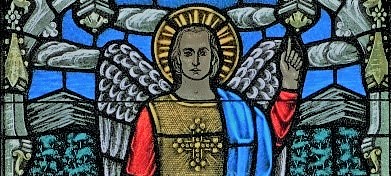Do you know why your priest postures change during the mass? Do you know why/when he faces East (the apse) and faces the people at the celebration? Have you (been) asked that question? In this piece, I will address some aspects of that very important theological question.
During the mass the priest’s posture changes alternatively between facing the people (“misa versus populum”) and facing the apse (“misa versus apsidem”) which is the East, front of the Church. What we do in the liturgy is a consequence of who and what we are before God. Since the human body shares in the dignity of the ‘image of God’, in the Liturgy the sanctification of the man is signified by signs perceptible to the senses, and is effected in a way which corresponds with each of these signs. That action is principally an exercise of the priestly office of Jesus Christ before the Father in heaven, while in the earthly liturgy we take part in a foretaste of that heavenly liturgy which is celebrated in the holy city of Jerusalem toward which we journey as pilgrims.
There are two primary ways in which Christians in their worship in the first centuries of the faith embodied this communal pilgrimage toward heaven:
* By facing one another for proclamation and dialogue; the priest in the first centuries’ era faced the people during the Liturgy of the Word so as to fulfill his role, which was to act “in the name of Christ” (in persona Christi), both when proclaiming the gospel to them and during those parts of the Mass when he prays in dialogue with them.
* By facing east for the Eucharistic prayer. Priests in the first centuries’ era almost universally faced east, the direction of rising sun, during the Eucharistic prayer, anticipating thereby the glory of Christ’s return to earth. In most churches, this also meant that they faced the apse, with the people. Acting again in persona Christi, priests embodied the fact that Christ the Priest became completely as one of us when he journeyed toward the cross and invited us to follow him.
What we do in worship is a reflection of who we are — an understanding that the first Christians expressed through their liturgical posture. When the priest proclaims the readings versus populum, he embodies Christ as Prophet — something is lost when he proclaims the readings away from them, even if that posture has symbolic meaning. When he turns toward the people and leads them in dialogue, he embodies Christ as King — again, something is lost when he speaks to them without turning toward them, even if his posture versus apsidem has symbolic meaning.
Yet unless the priest embodies the spiritual principle of turning versus Deum per Iesum Christum (turning to God through Jesus Christ), by assuming the same eastward posture as do the members of the congregation, then it becomes more difficult to see reflected in him the humility by which he embodies Christ as Priest, who, as Saint Anselm pointed out, can serve as our mediator precisely and only because he is fully one of us.
And he no longer necessarily faced east in expectation of the return of Christ. Instead, he always faced the apse, which was taken to represent the east, regardless of whether the church was so constructed that by celebrating versus apsidem he was facing literal, geographical east.


